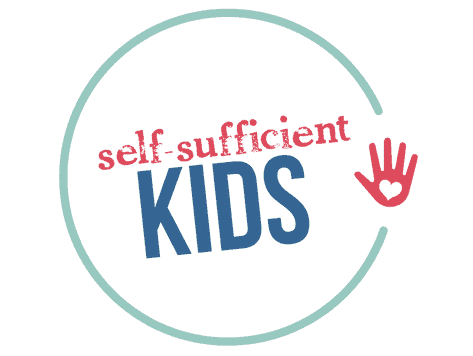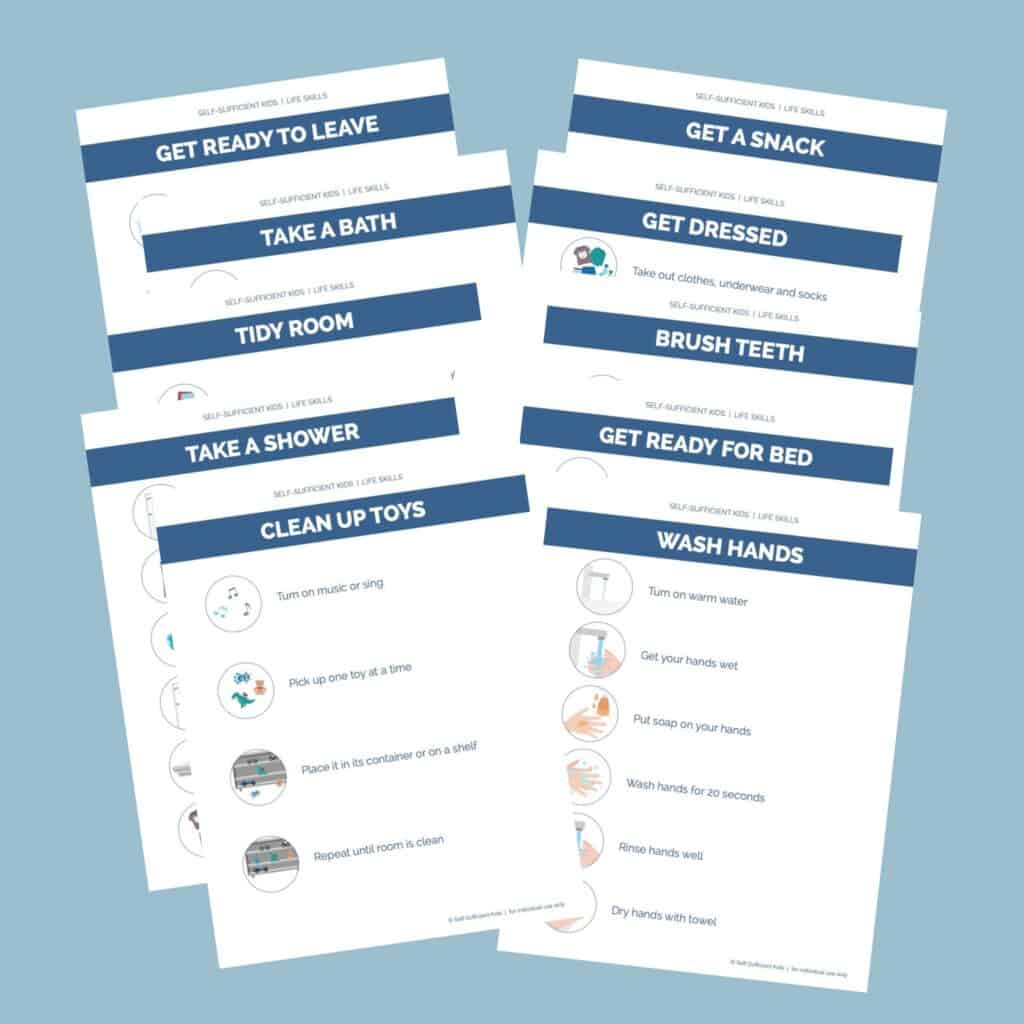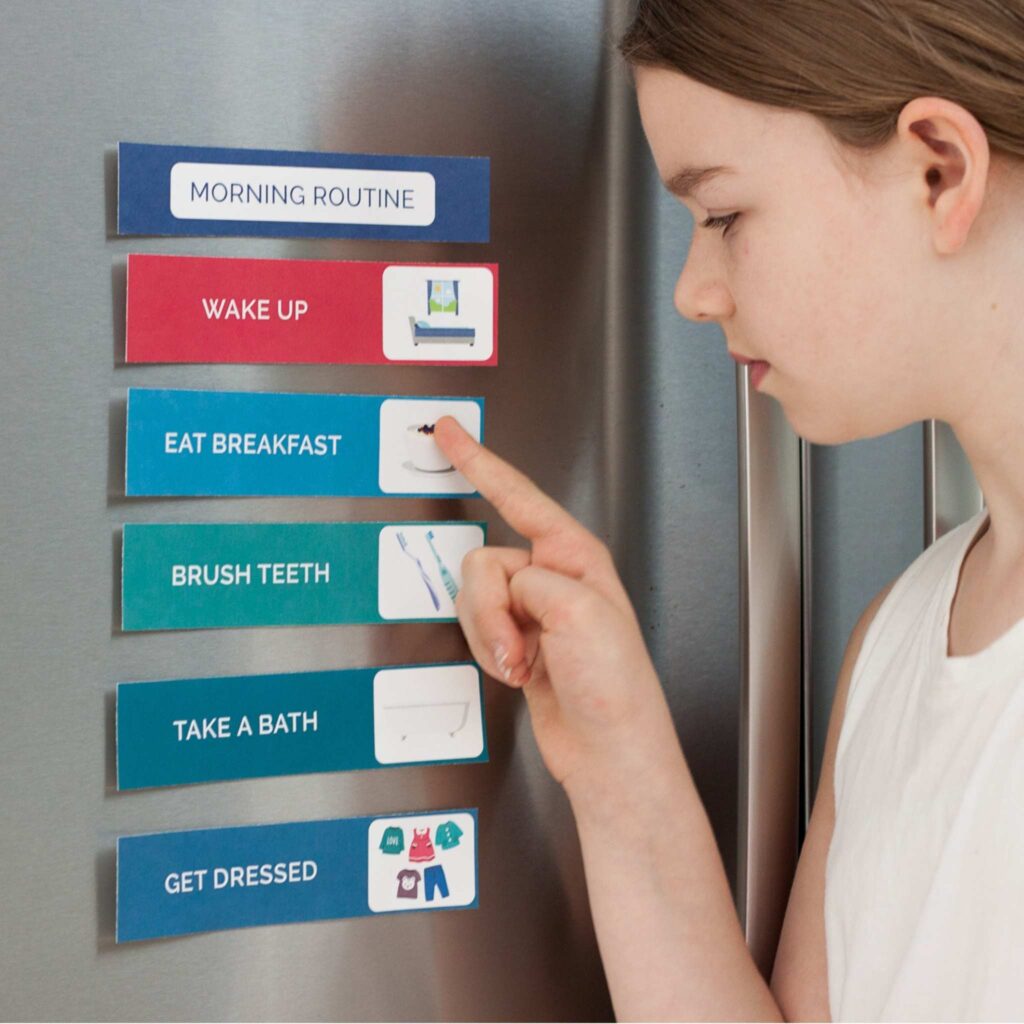The Best Bedtime Routine to Get Your Kids to Fall Asleep – and Stay Asleep
Inside: A bedtime routine for kids that will get them to sleep in no time. Plus, what to do when your child refuses to go to sleep.
Getting your child to follow a consistent sleep schedule helps your child fall asleep, stay asleep, and prevents the tiresome bedtime battles that come when it’s time to turn off the lights.
When your child doesn’t get enough sleep, it’s harder for them to control their emotions. They can become irritable and hyper, have behavior problems, and have a harder time learning and paying attention.
Essentially, poor sleep affects children just as it affects us. But since they require much more sleep than we do, the impact is far greater.
If your child is getting insufficient sleep, or you’ve been struggling to implement healthy sleep habits, these tips can help you develop the perfect bedtime routine.
Why kids benefit from having a bedtime routine
Giving your child a good bedtime routine will not only make bedtime a smoother, easier process for the entire family, but it’ll also improve their overall quality of sleep.
Research shows that children with a consistent nightly bedtime routine fell asleep earlier, took less time to fall asleep, had fewer night wakings, and slept longer than children who didn’t have a solid bedtime routine.
Other benefits your child receives from a good sleep routine are:
- Fosters parent-child bonding
- Improves mood, stress levels, and behavior
- Prepares them for school so that they can academically and socially perform their best
- Improves their memory, attention span, and many other vital cognitive skills
- Encourages your child to become more self-reliant
- Develops healthy habits as your child grows
Even if your child loathes bedtime itself, chances are they’ll actually enjoy a regular bedtime routine.
When you have an established step-by-step process that consists of tasks and activities, it fulfills children’s need for predictability. This will help your child to feel safe and secure while also giving them a sense of control.
At what age should a bedtime routine start?
The earlier you start your child’s bedtime routine, the better. Many experts suggest that a few months into your child’s first year is the best start time as it encourages babies to wind down and get ready to fall asleep.
If your child is older and your bedtime routine still needs work, that’s OK! Indeed, earlier is better, but it’s also never too late! Once you have an effective routine in place, keep at it. Your child will come to love the predictability of a few good sleep habits before drifting off to dreamland.
How much sleep do kids need?
How much sleep a child needs really depends on what age they are. As kids grow and develop, their brains and bodies need a certain amount of rest – much more than adults. Early in life, a person develops at such a rapid rate, that their brains have to work extra hard to keep up!
Therefore, sleep is essential to young children and it’s important that parents ensure that their child gets the appropriate amount of sleep for their child’s age.
Here’s a list to demonstrate how long children of different ages need to sleep in order to have a good night’s sleep:
| Age of Child | Amount of Sleep Each Day |
| 1-4 weeks old | 15-16 hours |
| 1-4 months old | 14-15 hours |
| 4-12 months old | 14-15 hours |
| 1-3 years old | 12-14 hours |
| 3-6 years old | 10-12 hours |
| 7-12 years old | 10-11 hours |
| 12-18 years old | 8-9 hours |
As you can see, the younger the child is, the more sleep they’ll need, which matches up, because this is when they’re developing the most. As your child gets older, they won’t need as much sleep as their rate of development is slowing down.
A step-by-step bedtime routine that will get your kids to sleep in no time
The best bedtime routine should work for both your child and your family. It should be calming, predictable, and consist of enough quiet activities to give your little one some time to transition from whirling around to winding down.
That being said, here’s a consistent bedtime schedule that you can follow to ensure your child gets good sleep without any power struggles:
- Have a set bedtime: Your bedtime routine should take about 30 minutes, but no longer than an hour to get through. Make sure you get started early enough so your child gets to bed at the same time every day. That way, they’ll feel tired at their usual bedtime.
- Avoid bright lights: Dim lights are relaxing and help prep your child’s body for sleep. Swapping out the overhead lights in your child’s bedroom for a dim night light or blue light is an easy way to darken up the space for sleep.
- End screen time: Much like bright lights, screens keep our child’s body in “awake mode.” Prevent your child from using any electronic devices for at least two hours before bedtime.
- Offer a healthy snack: If your child tends to say that they’re hungry just before getting into bed, offer them a healthy snack before starting your routine. Offer foods that are nourishing and help with sleep such as crackers with peanut butter, or a cup of milk and banana slices.
- Start with bath time: For some kids, bath time can be an important part of the bedtime routine. Warm water is soothing for children and will help get them relaxed and into a calmer state.
- Put on pajamas: Putting on PJs tells your child that it’s getting close to bedtime. Allow them to choose which pajamas they want to wear so they feel like they’re more in control and are less likely to protest.
- Brush teeth: Brushing teeth at the same time every night not only keeps your child’s teeth healthy but also helps normalize the overall bedtime routine. This will let your child know that the next step is getting in bed.
- Read a bedtime story: Reading bedtime stories is a wonderful way to spend quality time with your child and make them feel safe and secure before going to bed. Not to mention, the soft sound of your voice will get them nice and sleepy!
- Have a goodnight ritual: Find a special way to say goodnight to your child that you can practice each night. If you’re unsure of what your child would like, ask them what they’d like you to do. Whether it’s getting tucked in with their favorite teddy bear, or listening to their sound machine, make it a ritual that’ll help them fall asleep with ease.
Help guide your young child through everyday tasks with these Simple Directions for Young Children Cards. Each card serves as a reminder of how to carry out a task and allows children to eventually take on tasks independently. Click here to learn more.
What to do when your child refuses bedtime
Even the best, most consistent bedtime routine cannot be 100% foolproof. There are many external factors that can affect your child’s everyday life. Whether it’s a bad day at school, a fight with a sibling, or an emotional overload, these types of scenarios can make certain nights harder than others.
Therefore, it’s essential to have certain strategies in place to get you back on track with your child’s bedtime schedule and avoid any explosive emotions:
- Stay one step ahead: Your child might try to come up with last-minute requests as a way to procrastinate bedtime. To avoid this, anticipate your child’s needs and have them at the ready so they don’t have any excuses.
- Active listening: If your child is clearly upset about something, use it as an opportunity to ask them what’s wrong. Be sure to validate their feelings and comfort them however you see fit and come up with a solution together.
- Offer choices: Give your child choices throughout their routine so that they feel like they have more control of the process. Asking your child which activity they’d like to do before bed (e.g. bedtime story, nighttime song, etc.) or which color toothbrush to use will help prevent power struggles that rile up your child.
- Provide a bedtime buddy: Sometimes it’s scary or difficult for kids to be alone, especially in the darkness of their room. Sending your child to dreamland with a pal like a blankie, teddy, or a T-shirt that smells like mom will give them a sense of safety and security to rest easier.
- Don’t force it: Making your child fall asleep as soon as they’re in bed can cause them to rebel even more. Instead, let them know that they can stay awake for now, as long as they’re in bed. You can have them listen to calming songs, look at books, or quietly play with their stuffed animals until they drift off to sleep.
- Stand your ground: As a parent, it’s hard to listen to your child in distress as you leave their room. However, your child will be better off when you resist the urge to go back and comfort them. Wait about five to 10 minutes before returning, and when you do, reassure them with kindness and care. If they continue to cry when you leave, repeat the process until they finally fall asleep – they will, eventually!
Remember, getting your child adjusted to a new bedtime routine doesn’t happen overnight, so patience is key. As long as you show empathy and stay consistent, your child will catch on and even grow to find comfort in your night time routine.
See related:
The Perfect Bedtime for Kids and How Long They Need to Sleep
How to Establish a Calm Morning Routine For Kids That Works
6 Ways Kids Routines Encourage Independence and Bring More Sanity to Your Life
How Quiet Time Can Fuel Your Child’s Creativity (and Help Your Sanity)
What is Executive Functioning in Children and Why is it Important?
Calm your crazy mornings (and afternoons, and evenings!) with these routine cards for kids. These cards allow kids to independently check what they need to do and in what order – so you don’t have to remind them! Click here or the image below to learn more.
What to do next…
1. Subscribe to Self-Sufficient Kids’ email list.
Like what you read here and want to learn more? Every Thursday I’ll send you one parenting tip about raising self-sufficient kids and creating the peaceful relationship you yearn to have with your child. Click here to sign up.
2. Take one of my quizzes!
Find out if you’re raising a self-sufficient kid (click here) or if you’re doing too much for your kids (click here). At the end of each quiz, you’ll be asked to provide your email address to see the results.
3. Get your kids started on chores.
Learn how to get your child started on chores (& keep them motivated + avoid power struggles) by enrolling in my Get Your Kids Successfully Started on Chores course. Click here to learn more and sign up.

About Kerry Flatley
Hi! I’m Kerry, the mother of two girls and a certified parent educator. I believe it is possible for parents to have a supportive, loving, and warm relationship with their kids while raising them to be independent and ultimately self-sufficient. Over the years, I’ve read numerous books and articles that support this belief and I’ve put these ideas into practice with my own kids. Read more about me and Self-Sufficient Kids here.




